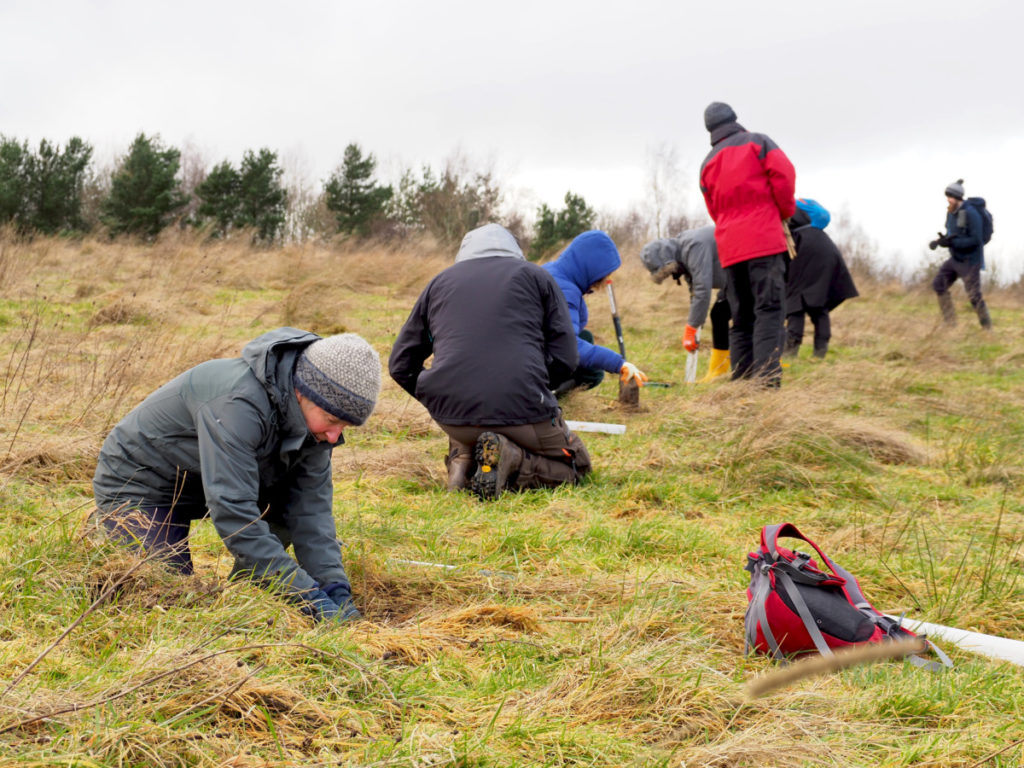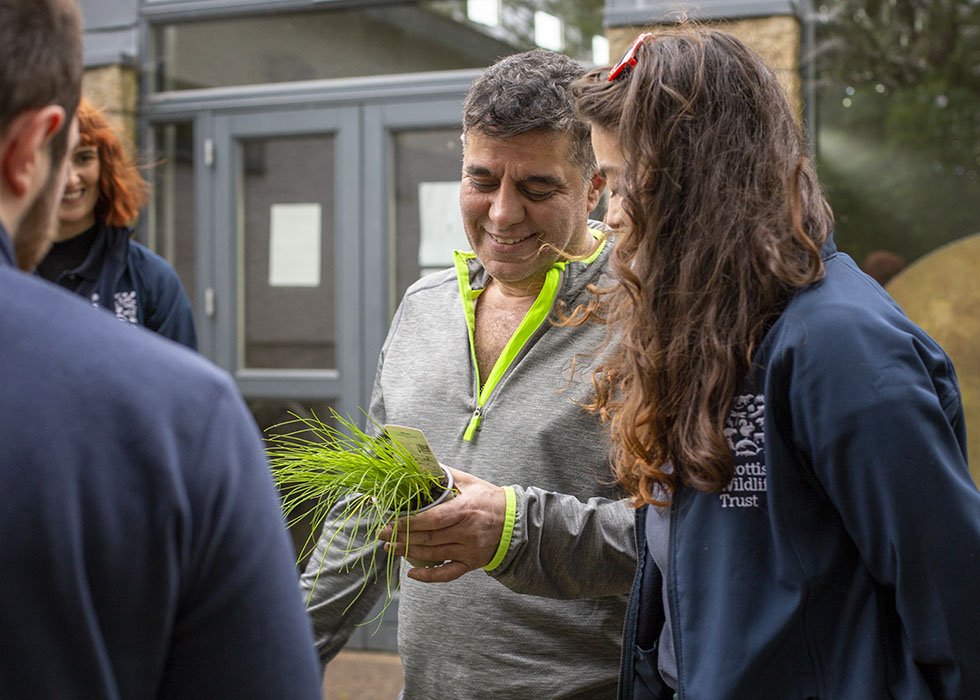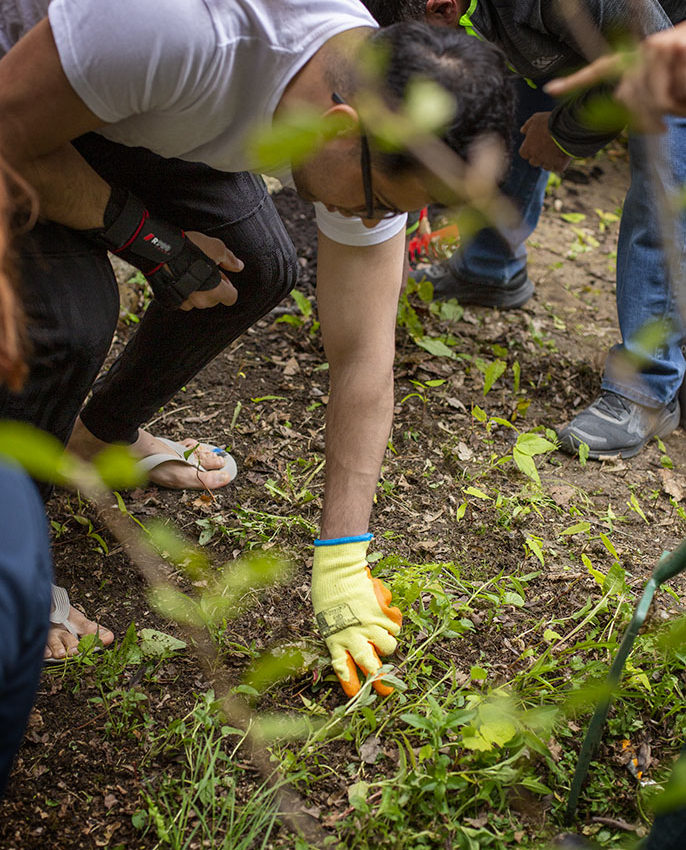Written by:
Imagine living in a neighbourhood where nature thrives, where there is a strong sense of community spirit and where people pull together to help each other and their local wildlife. Many of us would like to see more nature in our local area, but it can be hard to know where to start. Through our Nextdoor Nature project, the Scottish Wildlife Trust is working with partner organisations and groups to empower individuals to organise action for nature within their own communities.
As a conservation charity the Trust is perhaps most known for the 100+ wildlife reserves we manage throughout Scotland, from the remote island havens of Handa and Eigg to the woodland oases nestled between central belt housing estates. Wildlife reserves play a crucial role in conservation efforts, but as the world faces the combined biodiversity and climate crises, we believe that it is only by facilitating community-led action that nature will begin to recover at a Scotland-wide scale.

Funded by National Lottery players, the 2-year Nextdoor Nature project includes the development and delivery of our exciting new Pioneers Programme. This six-month training programme is completely free and open to community leaders (established and aspiring) from lower income communities that have not always been given the support they deserve from larger nature conservation organisations. The course covers a wide range of topics around how to improve local spaces for nature, but also about how to effectively organise for change in your community, which is why we were keen to get The Glass-House involved.
As part of the programme the ‘pioneers’ are supported to carry out a small community project, with many focussing on taking ownership of poorly used public spaces, or collectively enhancing an existing greenspace for the benefit of both people and wildlife.

We were in the midst of our third cohort of pioneers– covering a geographic range that stretches along Scotland’s east coast from Dundee to Aberdeen – when we invited Sophia and Louise to join us online to share some creative ways to bring a diverse range of people on board for the journey and include them in the process of designing their own outdoor spaces.
The workshop kicked off with familiarising ourselves with some new concepts: design engagement to empower communities to lead their own design processes while learning new skills; community-led design that helps communities to create projects using resources within the community by mobilising local organisations and giving new tools to community members; and the difference between traditional consultation strategies and engaged design.
We also learned how to map a community, focusing on projects that are already happening or that people would like to see happen. Mapping these helps to explore the potential of the area and kickstart collaboration (or ‘cross pollination’ – we are big fans of pollination here at the Scottish Wildlife Trust). We learned that mapping often works best when you can use tactile, inclusive tools, such as pipe cleaners, clay, or even hay bales to mark out footprints of a design. Minecraft or Roblox are also useful to design 3D in a digital space, especially if young people are involved.
Sophia shared some inspiring stories about projects The Glass-House has supported and encountered over the years, how these projects emphasised the importance of designing shared spaces with the community, and how it contributed to the community and individuals’ wellbeing.
Using activity cards designed by The Glass-House, the Nextdoor Nature pioneers practiced describing themselves and their projects using just a few sentences. This way they can make a strong impression on people they engage with when sharing their aims. While sharing their ideas and skills, pioneers could also see potential connections, such as shared interests and skills that can help others. They found out that one participant is a map expert, two can help with pollinator surveys, two can share their experiences working with schools, and one even offered her experience as a writer.

The next activity focused on co-design and engagement by discussing a fictional area next to a school that has the potential to become a biodiverse community garden. Considering the school example, participants discussed a couple of essential questions, such as what they would hope to find out through engagement with the school and the community, including what biodiversity is already there, what is lacking from the school and the community; who they need to engage in the conversation and the design process and how to engage them. When engaging with the community it’s important to know the aims, such as to engage everyone in meaningful conversation, gather local views and ideas, or connect people who can help each other with their skills.
Finding a hook to draw people into a conversation can be effective, such as playing games or giving away something (e.g. plants) to start a discussion on what to plant in a community garden. Key questions, such as ‘Do you use this space?’, ‘Would you get involved if we were doing something here?’, and ‘What would interest you?’ should be asked during these events.
To wrap up the workshop, we were reminded that when planning a co-design activity, keep in mind how we can use our discoveries for the next steps, and how engagement can help activate collaboration and partnerships.

Our first year delivering the Pioneers Programme has been a whirlwind of activity, from building new knowledge and skills through webinars and online learning, to connecting with one another while tree planting in the rain and telling stories round the campfire. The Glass-House workshop was an excellent way to round things off, and no doubt our pioneers will be starting 2024 energised and ready to go!
This blog was written by Gillian Hatcher, Engagement Manager, and Zóra Tamás, Nextdoor Nature Community Engagement Officer at The Scottish Wildlife Trust.
